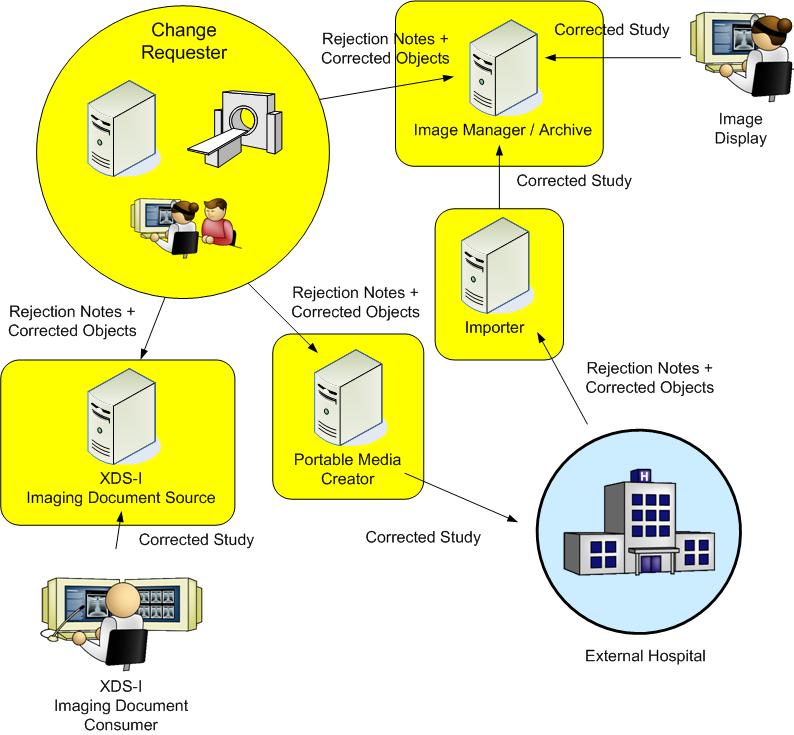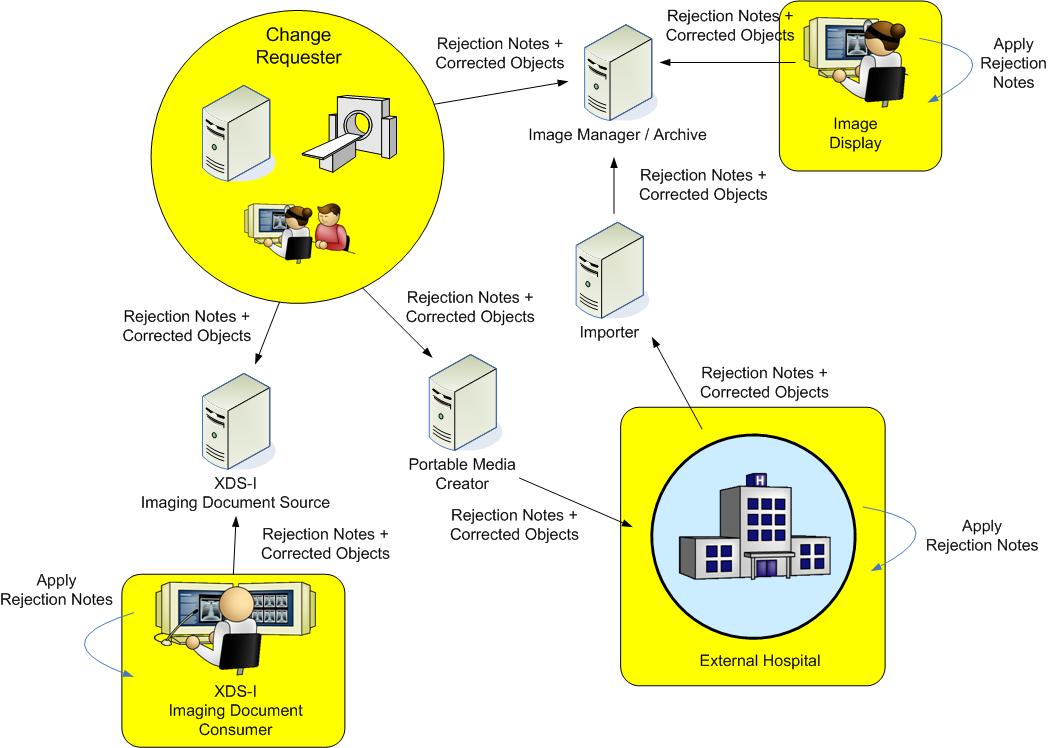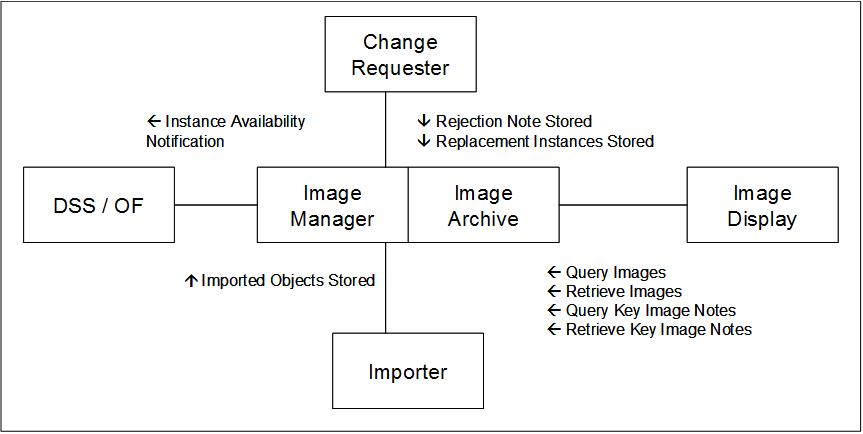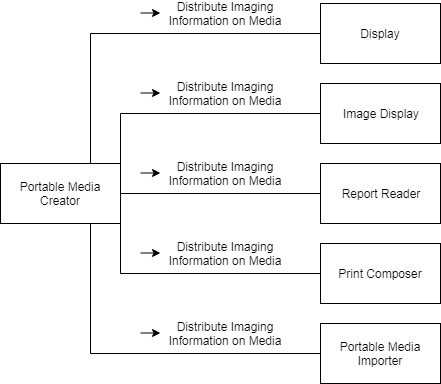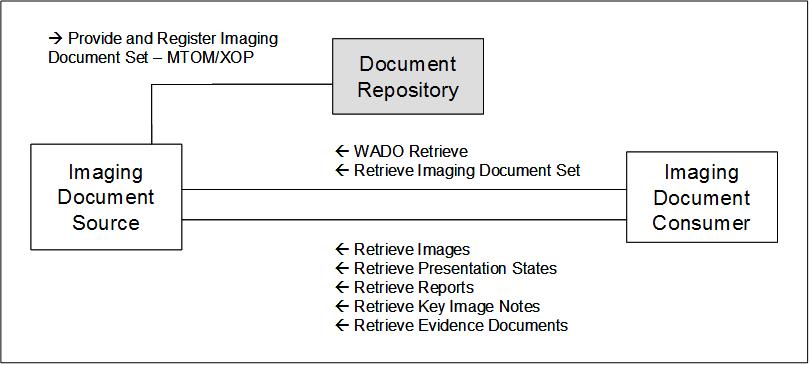Difference between revisions of "Imaging Object Change Management"
(Created page with "'''Imaging Object Change Management (IOCM)''' specifies how one actor communicates local changes applied on existing imaging objects to other actors that manage copies of the mod...") |
|||
| Line 7: | Line 7: | ||
==Summary== | ==Summary== | ||
Imaging Object Change Management (IOCM) specifies how one actor communicates local changes applied on existing imaging objects to other actors that manage copies of the modified imaging objects in their own local systems. The supported changes include (1) object rejection due to quality or patient safety reasons, (2) correction of incorrect modality worklist entry selection, and (3) expiration of objects due to data retention requirements. It defines how changes are captured and how to communicate these changes. | Imaging Object Change Management (IOCM) specifies how one actor communicates local changes applied on existing imaging objects to other actors that manage copies of the modified imaging objects in their own local systems. The supported changes include (1) object rejection due to quality or patient safety reasons, (2) correction of incorrect modality worklist entry selection, and (3) expiration of objects due to data retention requirements. It defines how changes are captured and how to communicate these changes. | ||
| + | |||
| + | [[File:IOCM_1.jpg]] | ||
| + | |||
| + | [[File:IOCM_2.jpg]] | ||
==Benefits== | ==Benefits== | ||
| Line 38: | Line 42: | ||
'''Actors & Transactions:''' | '''Actors & Transactions:''' | ||
| + | [[File:IOCM_diagram1.jpg]] | ||
| + | |||
| + | [[File:IOCM_diagram2.jpg]] | ||
| + | [[File:IOCM_diagram3.jpg]] | ||
==Specification== | ==Specification== | ||
Revision as of 14:03, 1 January 2013
Imaging Object Change Management (IOCM) specifies how one actor communicates local changes applied on existing imaging objects to other actors that manage copies of the modified imaging objects in their own local systems. The supported changes include (1) object rejection due to quality or patient safety reasons, (2) correction of incorrect modality worklist entry selection, and (3) expiration of objects due to data retention requirements. It defines how changes are captured and how to communicate these changes.
Summary
Imaging Object Change Management (IOCM) specifies how one actor communicates local changes applied on existing imaging objects to other actors that manage copies of the modified imaging objects in their own local systems. The supported changes include (1) object rejection due to quality or patient safety reasons, (2) correction of incorrect modality worklist entry selection, and (3) expiration of objects due to data retention requirements. It defines how changes are captured and how to communicate these changes.
Benefits
Provides a simple consistent synchronization mechanism of the following use cases
- Data Retention Expiration
- Correction or Rejection of imaging instances for Quality Reasons
- Correction or Rejection of imaging instances for Patient Safety Reasons
- Correction of Modality Worklist Selection
Support progressive enhancement to workflow
- The minimal requirement is the introduction of the Change Requester capability into existing Modality, Evidence Creator or Image Manager
- Subsequent actors (e.g. Image Display, XDS-I Imaging Document Consumer, etc.) can be upgraded progressively to provide better synchronization
Support intra-enterprise and inter-enterprise workflow
- The synchronization mechanism is supported within an enterprise using SWF
- The synchronization mechanism is also supported across enterprises using XDS-I or IRWF
Details
The Imaging Object Change Management (IOCM) Integration Profile:
Systems Affected
Systems involved in this profile are:
- Enterprise-wide information systems that manage patient registration and services ordering (i.e., admit-discharge-transfer (ADT)/registration system and hospital information system (HIS ))
- Radiology departmental information systems that manage department scheduling (i.e., radiology information system (RIS))
- Radiology image management/archiving (i.e., picture archiving and communication system (PACS))
- Acquisition modalities
Actors & Transactions:
Specification
Profile Status: Trial Implementation
Documents: IHE Radiology Technical Framework:
Underlying Standards:
See Also
Related Profiles
- Scheduled Workflow [SWF] provides the core workflow within an enterprise that IOCM can be used for post acquisition synchronization.
- Import Reconciliation Workflow [IRWF.b] provides a mechanism to import external studies into the local enterprise.
Consumer Information
Implementer Information
Reference Articles
This page is based on the Profile Template
